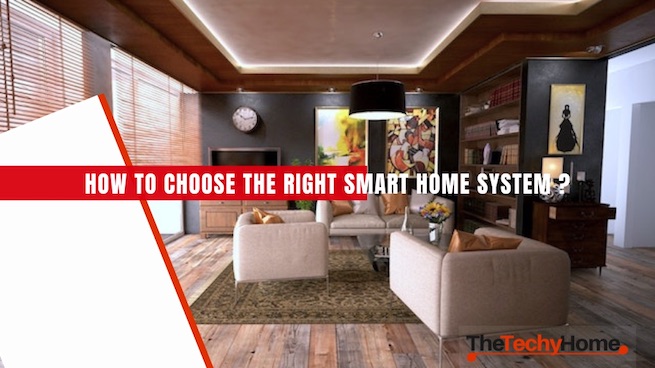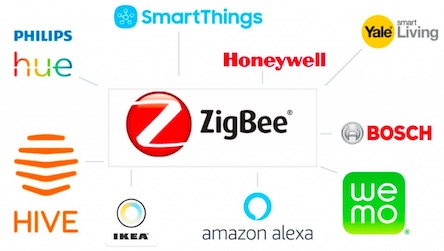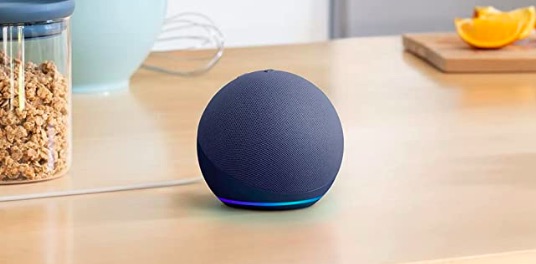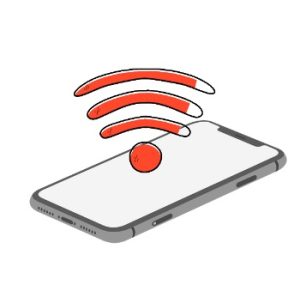
So you’re hesitant about getting a smart home system, but you’re not sure what all the hype isabout. Or maybe you’re looking to upgrade your current system, but don’t know where to start. No problem! In this article, we’ll help you choose the right smart home system for your needs and walk you through installing it yourself.
How Does a Smart Home System Work?
A home automation or automation system is a technology that controls and integrates the various subsystems in a residence. Home automation systems can range from simple tasks like turning lights off and on to more complex tasks like setting the thermostat and security system.
A smart home system is a type of home automation that uses computer-based remote control and artificial intelligence to carry out complex tasks.
Which Companies Make the Best Smart Home Devices?

Apple has long been known for its innovative products and cutting-edge design, and its smart home offerings are no exception.
The company’s HomeKit system allows users to control their smart home devices using Siri voice commands on their iPhone or iPad.
Another popular option is the Amazon Echo, which is a voice-controlled virtual assistant that works with Alexa, Amazon’s own smart home system.
Echo devices allow users to control smart home devices using voice commands or through custom scripts created by Amazon.
Can I Use My Own Devices in a Smart Home System?
Some smart home systems allow users to use devices that are not made by the system manufacturer. For example, the Amazon Echo allows users to control their devices using apps from other providers such as IFTTT and Wink.
A Z-Wave smart home system requires devices that are certified by the system manufacturer and support the standard.
Other systems, like Apple’s HomeKit, require devices to be made by the system manufacturer or have specially built firmware. This means that users will not be able to use devices that they currently own, but they will be able to purchase new devices that are compatible with the system. Also, Apple’s iDevices include several sensors and actuators that are required for HomeKit functionality.
What are examples of Smart Home Devices?
That’s the exciting part when it comes to Smart Home Systems. There’s a plethora of amazing devices that really changes the experience of being at home. Here is a list of some of them:
- Dimming Lighting Devices
- Energy Meters
- Entertainment Controller
- Fan Control
- Hospitality
- Infrared Devices
- Lighting Accessories
- Locks
- On/Off Switches
- Security Systems
- Sensors
- Thermostats
- Water Valves & Irrigation devices
- Window Covering
What is the Best Smart Home Systems?
There is no one perfect smart home system for everyone. The best smart home system for you will depend on your specific needs and preferences. Before making a purchase, it is important to do your research and consult with a qualified professional.
When it comes to choosing the right smart home system for you, it’s important to consider what type of home automation features you’re looking for, your budget, and the compatibility of the system with your existing technology.
The Smart Home System Features
First, determine what type of features you’re looking for in a smart home system. Do you want to be able to control lights, locks, and thermostats from your phone? Do you need a security system with motion detectors and cameras? Or would you prefer automated lighting, window shades, and audio/visual equipment?
Your Budget
Next, consider your budget. Smart home systems can range in price from a few hundred dollars to thousands depending on the features you choose. Be sure to shop around and compare prices to find the best deal.
Compatiblity
Finally, make sure the system you choose is compatible with the devices you already have. Some systems can be integrated with existing technology, while others require you to purchase new devices. Read product reviews and do your research to make sure the system you choose is compatible with your existing technology.
By following these steps, you can find the perfect smart home system for you.
Z-wave, Zigbee, Bluetooth, or WiFi?
 These systems use wireless communication protocols such as Z-wave, Zigbee, Bluetooth, or WiFi to control devices. Each protocol has its own strengths and weaknesses, so it is important to consider the features and compatibility of each type of protocol when deciding on the best system for your home.
These systems use wireless communication protocols such as Z-wave, Zigbee, Bluetooth, or WiFi to control devices. Each protocol has its own strengths and weaknesses, so it is important to consider the features and compatibility of each type of protocol when deciding on the best system for your home.
Z-Wave:
Z-Wave is a low-power radio frequency standard that was developed specifically for residential use. It provides homeowners with features like low latency and secure communication between different devices in a home. Z-Wave is compatible with several hundred different devices ranging from lights and locks to thermostats and security systems.
Zigbee:
Zigbee is a wireless protocol based on the IEEE 802.15.4 standard, designed for low-power, low-cost, and low-data-rate applications. It is used to create wireless personal area networks (WPANs) and is compatible with hundreds of different devices, including lights, locks, and thermostats.
Bluetooth:
Bluetooth is a wireless technology that allows for short-range data transmission. It is primarily used for connecting devices such as headphones, keyboards, and speakers. It is not commonly used as a smart home system, but it can be used to control some devices such as lights and speakers.
WiFi:
WiFi is a wireless networking technology that allows for high-speed data transmission. It is the most common type of wireless network and is used for everything from streaming video and music to surfing the web. It is often used as the backbone of a smart home systems.
Which Smart Home Technology Has the Most Compatibility with the Devices in the Market?
Z-Wave is widely considered to have the most compatibility with devices available on the market. It is a low-power radio frequency standard that is compatible with hundreds of different devices, including lights, locks, thermostats, and security systems. Additionally, Z-Wave also has a wide range of certified products, meaning that you can trust that your devices will work together as intended.
But it is worthy to note that Google Home has emerged as the most popular choice for smart home automation systems due to its open platform and wide compatibility with a variety of devices in the market. With Google Home, users can control their lights, thermostats, home entertainment systems and other smart home appliances. Moreover, it is compatible with leading brands such as Nest, Phillips, August and more than 5,000 smart home devices from over 400 manufacturers.
The system can be easily set up using the Google Home app, which allows users to easily manage, configure and control their devices. Furthermore, voice commands are supported, allowing users quick and easy access to the features of their Google Home system. All this makes it one of the most reliable, user-friendly and compatible home automation systems on the market.
Alexa or Google Assistant or…?

There are a variety of voice assistants available on many different platforms, so it is important to determine which one is best for you.
Alexa and Google Assistant are both available on Amazon Echo devices, Apple products such as the iPhone and iPad, Google Home devices, and many other smart home platforms.
Both Alexa and Google Assistant are able to control a variety of smart home devices from different providers, so they are both good choices if you want to use a system that has compatibility with a variety of providers.
However, if you only plan on using your voice assistant with one provider or platform, Alexa or Google Assistant may be the best choice for you.
How about Amazon Echo?
The Amazon Echo is a voice assistant built into the Echo device. Amazon Echo devices are available on Amazon.com, and they also work with the Alexa app on many other platforms, including Android and iOS phones and tablets, Windows Phones, Macs, and even some smart home platforms.
Can a Smart Home Be Hacked?
Yes, a smart home can be hacked. However, the majority of hacks occur when people expose vulnerabilities in devices that are not meant to be connected to the internet or when people do not have the proper security measures in place.
Make sure you understand how your smart home system works and install proper security measures, such as passwords and encryption, to protect your data.
So there you have it! The best way to choose the perfect smart home system for your needs. Before you buy any of the devices or apps necessary for a complete home automation system, make sure to do your research and consult with a professional.
Home Much Does a Smart Home Cost?
There is no one definitive answer to this question since systems and prices vary depending on the features and providers you choose. However, a few hundred dollars should get you started with a basic system that includes some of the most common features.
While the cost of outfitting a home with smart technology can vary depending on the types and number of products used, a report from Juniper Research estimates that the average smart home will cost $1,400 by 2022.
Some of the most popular smart home products include smart plugs, doorbells, and thermostats. These products allow homeowners to control their homes using their smartphone or other mobile devices. Smart home technology can also be used to automate tasks like turning off lights when no one is home or setting the temperature based on the time of day.
Overall, investing in smart home technology can provide homeowners with greater control over their homes and improve their quality of life.
How Much Does an Installed Smart Home System Cost?
Again, this answer varies depending on the features and providers you choose. However, a ballpark estimate would say that an installed system typically costs between $200-$2,000.
The cost of installing a smart home system can depends on the type of system you choose and the features you want included. For example, a basic system may cost around $100-$300, while a more advanced system with more features could cost up to $1000 or more. Additionally, you may need to purchase additional devices like sensors or cameras, which can add to the cost. Depending on the provider, you may also need to pay a monthly subscription fee or a one-time installation fee. It is important to research different providers and compare prices to find the best deal.
How can I do a home automation system myself?

If you want to do a home automation system yourself, its important to understand the basics of smart home technology. You will need to purchase smart devices like a Zigbee or Z-Wave gateway, sensors like a temperature sensor or smoke detector, and an app like IFTTT or Zapier.
Once you have your devices and app, you will need to create scripts that will control the devices in your system. For example, you might create a script that turns on all the lights in your house at sunset. Or you might set up an automation rule that opens the garage door when you get home from work.
There are many online resources that can help you get started with home automation. Be sure to research which ones are compatible with the systems you’re using and which ones are easiest to use.
What Is a Smart Home and What Are Smart Home Systems?

A smart home system is a collection of devices that work together to allow you to control your home from a single location. This could be anything from a simple lighting switch to a full home automation system.
There are many different types of smart home systems out there, so it’s important to choose one that will fit your specific needs.
A smart home is a residence that uses advanced technology to provide its occupants with increased comfort, convenience, security, and energy efficiency.
Smart home technology includes a variety of devices and systems that work together to achieve these objectives. Home automation is a core element of the smart home experience, allowing homeowners to control various aspects of their home remotely or through automated settings.
There are many different types of smart home products on the market today, from thermostats and lighting controls to security systems and whole-home audio solutions. With so many options available, it can be tough to decide which products are right for your needs. However, with a little research and planning, you can easily find the perfect smart home solution for your budget and lifestyle.
Are smart home devices worth it?
Everyone’s needs and preferences are different. But, if you are looking to save time and energy, or if you want to be able to control your environment more easily, a smart home system could be a good investment.
Are there any risks associated with using a smart home?
Yes, there are risks associated with using smart home devices. Hackers can access your devices and use them for unauthorized purposes. Additionally, many of the devices that are used in a smart home system are not designed for internet access and can be vulnerable to attack. Make sure you understand how your devices work and install proper security measures, such as passwords and encryption, to protect your data.
Conclusion
In conclusion, smart home systems can be a great investment if you want to save time and energy, or if you want to control your environment more easily. However, it is important to understand how the system works and to properly secure it to protect your data from hackers. There are many different types of systems and providers, so it is important to do your research and compare prices to find the best deal.

